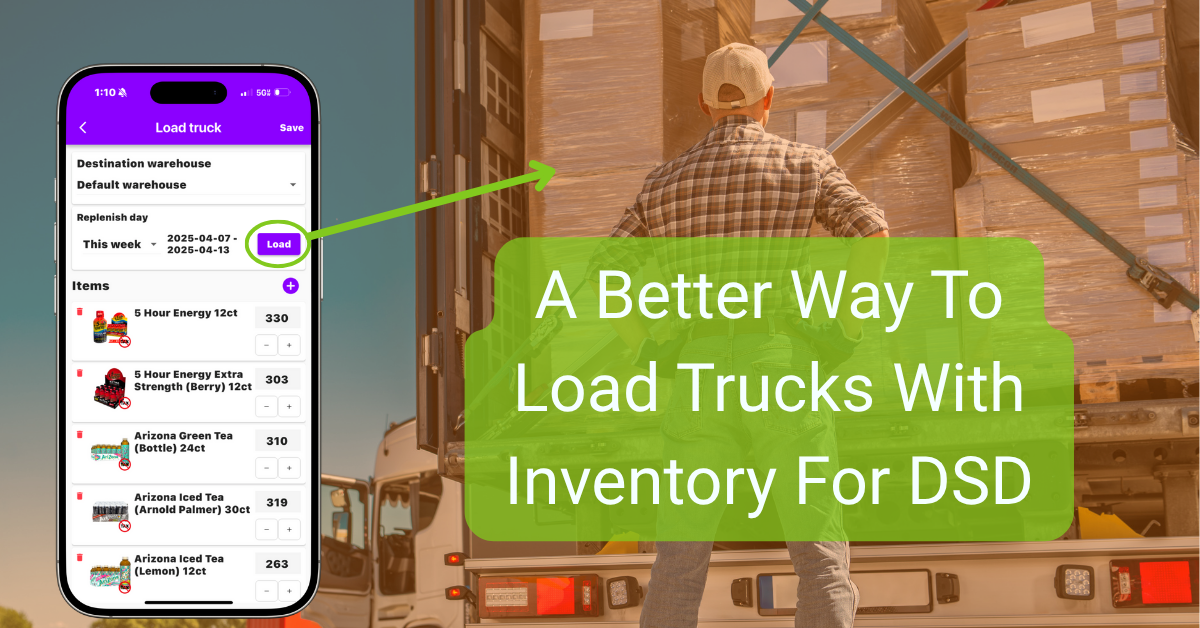
Loading Trucks With Inventory For Route Accounting
In the fast-paced world of wholesale distribution, efficiency and accuracy are paramount. For companies employing Direct Store Delivery (DSD) sales reps, the process of loading trucks with inventory is a critical operation that directly impacts sales performance and customer satisfaction. Traditional methods of managing this process—often reliant on paper-based systems and manual data entry—are fraught with challenges, including errors, delays, and miscommunication.
Enter mobile applications designed specifically for truck loading and inventory management. These digital solutions offer a transformative approach, streamlining operations, enhancing accuracy, and providing real-time visibility into inventory levels. This article explores the myriad benefits of adopting such apps, particularly for wholesale distributors with DSD sales teams.
The Challenges of Manual Truck Loading
Before delving into the advantages of mobile apps, it’s essential to understand the pitfalls of conventional truck loading methods:
-
Inaccurate Inventory Tracking: Manual counts are prone to errors, leading to discrepancies between actual and recorded inventory levels.
-
Inefficient Communication: Without real-time data sharing, sales reps and warehouse staff may operate on outdated information, causing delays and stockouts.
-
Time-Consuming Processes: Paper-based systems require more time for data entry, verification, and reconciliation, reducing overall productivity.
-
Limited Visibility: Managers lack immediate insight into inventory movements, hindering decision-making and responsiveness.
These challenges not only impede operational efficiency but also affect customer satisfaction and profitability.
Advantages of Using a Mobile App for Truck Loading
Implementing a mobile app for truck loading addresses these issues head-on, offering a range of benefits:
1. Real-Time Inventory Tracking
Mobile apps provide up-to-the-minute visibility into inventory levels, enabling:
-
Accurate Stock Counts: Sales reps can verify inventory in real-time, reducing errors and discrepancies.
-
Immediate Updates: Any changes in inventory—such as sales, returns, or restocking—are instantly reflected across the system.
-
Enhanced Decision-Making: Managers can make informed decisions based on current data, improving responsiveness to market demands.
2. Streamlined Communication Between Warehouse and Field Reps
Effective communication is vital for seamless operations. Mobile apps facilitate:
-
Instant Data Sharing: Information flows effortlessly between warehouse staff and field reps, ensuring everyone is on the same page.
-
Automated Notifications: Alerts for low stock levels, delivery schedules, and order changes keep teams informed and proactive.
-
Reduced Miscommunication: Clear, real-time communication minimizes misunderstandings and errors.
3. Enhanced Accuracy and Reduced Errors
Automation significantly reduces the likelihood of human error:
-
Digital Data Entry: Eliminates issues associated with illegible handwriting or misplaced paperwork.
-
Validation Checks: Built-in checks ensure data accuracy, flagging inconsistencies before they become problems.
-
Consistent Processes: Standardized workflows maintain uniformity across operations, enhancing reliability.
4. Time Efficiency and Increased Productivity
Time saved is money earned. Mobile apps contribute to:
-
Faster Loading Processes: Streamlined procedures reduce the time required to load trucks, allowing more deliveries per day.
-
Quick Access to Information: Sales reps can retrieve customer data, inventory levels, and order histories instantly.
-
Reduced Administrative Tasks: Automation cuts down on manual paperwork, freeing up time for value-added activities.
Key Features to Look for in a Truck Loading App
When selecting a mobile app for truck loading, consider the following features:
1. User-Friendly Interface
An intuitive design ensures:
-
Ease of Use: Minimal training required for staff to become proficient.
-
Quick Adoption: Faster implementation and acceptance across the organization.
-
Reduced Errors: Clear navigation and prompts minimize user mistakes.
2. Integration with Existing Systems
Seamless integration with your current infrastructure allows:
-
Data Consistency: Synchronization with ERP and inventory management systems maintains data integrity.
-
Operational Continuity: Avoids disruptions by fitting into established workflows.
-
Scalability: Supports growth without necessitating overhauls of existing systems.
3. Offline Capabilities
In areas with limited connectivity, offline functionality ensures:
-
Uninterrupted Operations: Sales reps can continue working without internet access.
-
Data Synchronization: Information updates automatically once connectivity is restored.
-
Reliability: Maintains consistent performance regardless of network conditions.
4. Customizable Reporting and Analytics
Robust reporting tools provide:
-
Insightful Metrics: Track key performance indicators to assess efficiency and effectiveness.
-
Informed Decision-Making: Data-driven insights support strategic planning and resource allocation.
-
Continuous Improvement: Identify areas for enhancement and monitor progress over time.
Implementing a Truck Loading App: Best Practices
To maximize the benefits of a mobile truck loading app:
-
Conduct a Needs Assessment: Identify specific challenges and requirements to select the most suitable solution.
-
Engage Stakeholders: Involve warehouse staff, sales reps, and IT personnel in the selection and implementation process.
-
Provide Comprehensive Training: Ensure all users are proficient in using the app to its full potential.
-
Monitor and Evaluate: Regularly assess performance metrics to gauge effectiveness and identify areas for improvement.
Adopting a mobile app for truck loading is a strategic move for wholesale distributors aiming to enhance efficiency, accuracy, and customer satisfaction. By addressing the inherent challenges of manual processes, these apps streamline operations, facilitate real-time communication, and provide valuable insights through analytics. As the distribution landscape becomes increasingly competitive, leveraging technology to optimize logistics is not just beneficial—it’s essential.
Ready to revolutionize your distribution operations? Explore mobile truck loading apps tailored to your business needs and experience the transformative impact on efficiency and profitability.
